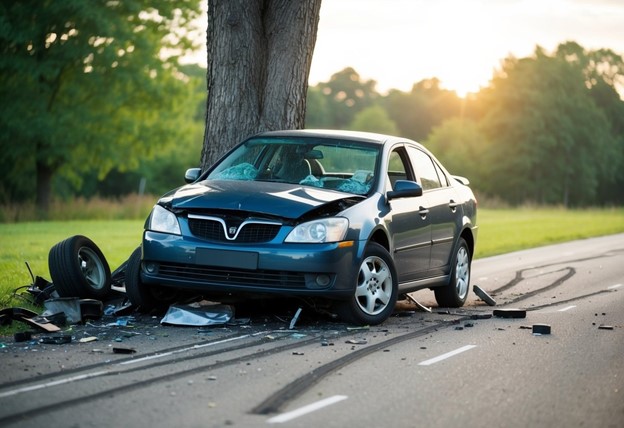What Age Group Causes the Most Car Accidents?
When examining which age group causes the most car accidents, statistics consistently point to young drivers between the ages of 16 and 24. This group is often involved in more accidents than other age demographics due to factors such as inexperience and risk-taking behaviors.
Understanding these factors can help in developing better strategies for education and prevention.
Young drivers often face challenges related to distraction, especially with the presence of mobile devices, which significantly increases the likelihood of accidents. They often overestimate their driving skills, leading to overconfidence behind the wheel, which can result in hazardous situations.
The lack of experience in handling unexpected road conditions further intensifies the risk. By exploring these dynamics, one can gain insights into how age impacts driving safety and why targeted measures are necessary to address these challenges.
Demographics of Car Accidents
Car accidents affect various age groups differently, with certain demographics being overrepresented in accident statistics. Younger drivers face unique risk factors, while older drivers may experience a decline in driving skills. Understanding these trends can assist in creating targeted safety measures and informing the work of car accident lawyers.
Age Groups and Accident Statistics
Data shows that teenagers and young adults are frequently involved in car accidents.
The 16-24 age group has the highest accident rate, accounting for a significant percentage of collisions. Demographics within this age group is often less experienced and more likely to engage in risky driving behaviors, such as speeding and not wearing seat belts.
Ages 25-34 also represent a notable proportion of traffic incidents. Although they have more experience than younger drivers, this group often faces distractions, potentially from technology use. Individuals aged 35-54 generally have lower accident rates but still contribute to a substantial number of incidents due to busy schedules and potential work-related stress.
Risk Factors Associated with Young Drivers
Driving is an essential skill that offers freedom and mobility, but it also comes with significant risks, especially for young drivers. This demographic is particularly vulnerable to road accidents due to a variety of factors. Understanding these risk factors is crucial for developing strategies to mitigate them and improve road safety. Here are some of the key risk factors associated with young drivers:
1. Lack of Experience
One of the most significant risk factors for young drivers is their lack of experience. Driving is a complex task that requires a combination of cognitive, physical, and emotional skills. Young drivers often lack the experience needed to make quick, informed decisions in high-pressure situations. This inexperience can lead to poor judgment and an increased likelihood of accidents.
2. Risk-Taking Behavior
Young drivers are more likely to engage in risky behaviors such as speeding, tailgating, and aggressive driving. This propensity for risk-taking is often linked to a combination of overconfidence and a lack of understanding of the potential consequences. The thrill-seeking nature of many teen drivers can lead to dangerous situations on the road.
3. Distraction
Distractions are a major concern for all drivers, but young drivers are particularly susceptible. The proliferation of smartphones and social media has made distracted driving a significant issue. Texting, talking on the phone, or using social media while driving can divert attention away from the road, increasing the likelihood of accidents.
4. Peer Pressure
Peer pressure can significantly influence the behavior of young drivers. When driving with friends, young drivers may feel compelled to show off or take unnecessary risks to gain approval. This can lead to dangerous driving behaviors such as speeding or performing risky maneuvers.
5. Alcohol and Drug Use

Substance abuse is another critical risk factor. Young drivers are more likely to experiment with alcohol and drugs, which can impair their driving abilities. Even small amounts of alcohol or drugs can significantly affect coordination, reaction times, and judgment, leading to a higher risk of accidents.
6. Fatigue
Fatigue is often overlooked but is a significant risk factor for young drivers. Many young people have busy schedules that include school, work, and social activities, leading to insufficient sleep. Fatigue can impair cognitive functions and reaction times, making it more difficult to respond to road hazards.
7. Overconfidence
Overconfidence is another issue that plagues young drivers. After obtaining their license, many young drivers may overestimate their driving abilities. This overconfidence can lead to risky behaviors such as speeding, aggressive driving, and not wearing seat belts, increasing the likelihood of accidents.
8. Environmental Factors
Young drivers may also be less adept at handling adverse environmental conditions such as rain, snow, or fog. Lack of experience in dealing with these conditions can make it difficult to maintain control of the vehicle, increasing the risk of accidents.
9. Vehicle Choice
The type of vehicle driven by young drivers can also be a risk factor. Many young drivers may not have the financial means to afford newer, safer vehicles equipped with advanced safety features. Older vehicles may lack essential safety technologies such as anti-lock brakes, electronic stability control, and advanced airbag systems.
Impact of Age on Driving Skills
Age affects driving skills differently across demographics. Young drivers are more agile but lack mature judgment. According to studies, the human brain continues developing into the mid-20s, which contributes to decision-making capabilities improving with age.
Older drivers, however, may experience declines in reaction time, vision, and cognitive function. This potentially increases their accident risk, despite often being more cautious. Car accident lawyers often advocate for more tailored safety regulations and public awareness to address these age-related challenges, promoting safer driving environments for all.
Legal Implications and Responsibilities
In car accidents, legal obligations often depend on the age of the driver and their assigned accountability. Insurance companies have a significant role in claims and liabilities, influencing compensatory outcomes.
Legal Accountability by Age Group
Legal accountability in car accidents varies across different age brackets. Younger drivers, particularly those aged 16-24, face stricter scrutiny due to their limited experience. Traffic violations and accidents often result in higher penalties for this age group.
For drivers over 65, accountability may focus on physical and cognitive faculties impacting driving abilities. In any age group, hiring car accident lawyers can aid in navigating litigation, with representation potentially mitigating legal consequences. Such professionals are adept at dissecting traffic laws and leveraging evidence to influence liability determinations.
Courts evaluate multiple factors: age, historical driving record, and specific circumstances of the accident. Each factor can sway the legal outcome significantly.
Role of Insurance in Car Accidents
Insurance policies are critical in determining the financial responsibility of drivers involved in accidents. Age impacts premiums, often higher for younger individuals due to perceived risk, which consequently affects claim processes. Older drivers might benefit from lower premium rates until claims are filed.
Insurance adjusters investigate incidents, assessing damage and fault to determine coverage extent. Navigating claims requires a keen understanding of policy details. Collaborating with car accident lawyers may ensure rightful claim fulfillment and challenge unjust denials.
Insurance is a decisive element in post-accident scenarios, affecting compensation and liability distribution. Accurate insurance documentation and timely reporting are paramount in supporting a favorable resolution for all parties involved.
Safety Measures and Accident Prevention
Effective safety measures are essential to reduce car accidents, particularly among younger drivers. Focused education, stricter road safety laws, and technological innovations are key efforts in minimizing road incidents.
Education and Training for New Drivers
Education plays a crucial role in preparing young drivers, even before they get their first car. Comprehensive driver education programs can help young drivers develop the skills and knowledge needed to drive safely. These programs should include both theoretical knowledge and practical driving experience in various conditions. These comprehensive driving courses offer practical and theoretical knowledge, enhancing awareness of road hazards. Graduated Driver Licensing (GDL) systems can significantly lower accident rates by ensuring new drivers gain experience in a controlled manner.
Programs can include defensive driving techniques and crisis management skills. Regular assessments and refresher courses are beneficial, reinforcing essential skills and promoting safe driving habits.
Road Safety Laws and Regulations
Strict enforcement of traffic laws deters reckless driving behaviors. Speed limits, seat belt mandates, and alcohol restrictions are some regulations that influence safety. Increased penalties for violations can act as significant deterrents.
Laws targeting young drivers, like zero-tolerance laws for alcohol consumption, are particularly impactful. Policymakers continually revise laws to adapt to emerging challenges, ensuring they effectively reduce accidents.
Technological Advancements in Vehicle Safety
Technological innovations increase vehicle safety and help prevent accidents. Features like Anti-lock Braking Systems (ABS), Electronic Stability Control (ESC), and Advanced Driver Assistance Systems (ADAS) assist in maintaining vehicle control and prevent collisions.
Modern vehicles also offer collision detection systems and lane departure warnings. These technologies support drivers in avoiding distractions and navigating safely. Continued advancement in vehicle safety technology promises substantial reductions in accident rates over time.
Parents also play a crucial role in shaping the driving behaviors of young drivers. Setting a good example, establishing rules, and monitoring driving activities can help mitigate risks.




